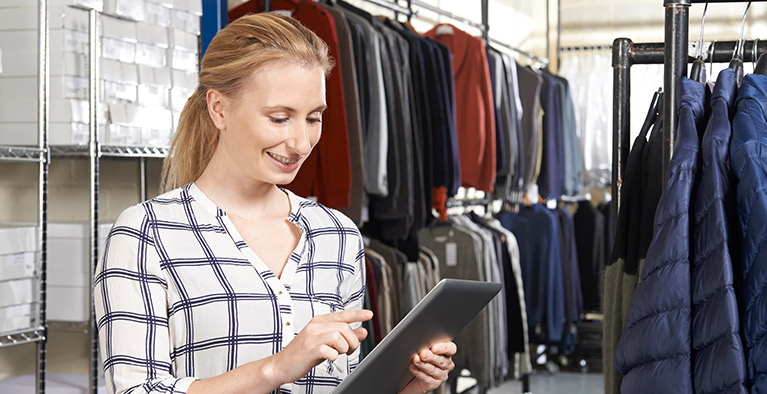Pick up any newspaper and you will see hundreds of advertisement luring customers to one retailer or the other. Radio and TV blare jingles in tune with the brand promise of various products and urge the customers to engage with them. However, big budget marketing efforts as they are, how much of an impact do you think they make on an individual customer? Compare this to a personalized message that one receives on her mobile, identifying her as a distinct shopper, pre-empting her shopping need. The personalised message guides her to the best offer on the product/category that she is most likely to shop, and that too while she is still inside the store, trying to make up her mind on what to buy! Which of these above scenarios do you think the customer is more likely to respond to?
The e-commerce sites have always claimed a higher ground when dealing with customer preference and offering her suitable recommendations to encouraging greater engagement, resulting in higher sales. On a shopping site, each customer is individually recognised, her purchase history and shopping preference duly analysed and offers are generated and communicated while the customer is still on the site. All information required for the product they want to check out is available on their fingertips and their queries pre-empted. The restless, on the moving customer, is offered instant gratification that she seeks. Most offline retailers, relying on the traditional means of marketing fall short of offering the same level of engagement, experience and excitement to their customer base. However, with real-time in-store personalization, they can replicate the same engagement and experience and win customer delight.
What is In-store Personalization?
In-store personalization is the ability to identify customers, understand their current context, overlap it with analysis or their past behaviours, purchases and preferences and respond back with highly relevant and personalized recommendations. And this needs to be done needs to be done at lightning speed while they are still inside store evaluating a purchase. This allows retailers to capitalize on cross sell and up-sell opportunities based on the ability to impact the purchase decision and instant offers that provoke impulse buying. Retailers usually identify a customer at the PoS, but by then it is too late and vital opportunities are missed.
How to Deliver In-store Personalization, Real-time?
Technology is a great enabler. Mobile phones, WiFi, Bluetooth and RFID tools help retailers to get up close and personal with the customers. Sample these scenarios.
Scenario 1:
Sarah enters a store and is allowed access to free WiFi on her mobile. Her mobile number is identified and her purchase history, shopping preferences and propensity to next purchase category is analysed. She is then sent personalized offers. “Hi Sarah, how about an ethnic wear for the festive season? Check out the display on the first floor and get 25% off by quoting your mobile number at checkout”. In this instance, the system identifies Sarah as a shopper who generally picks up casual wear and accessories and is trying to encourage her to try new category.
Scenario 2:
James enters a mall and is encouraged to switch on his Bluetooth to receive offers and product information. His usual retailer identifies him as a repeat shopper and sends him personalized message guiding him to a bundle offer on his regular purchase. “Hi James, welcome back. Get 30% off on kids wear when you pick up your favourite shirt-trouser combo. Quote coupon code MYOFFER at checkout”.
Scenario 3:
Julie is encouraged to send an SMS to a specific number to receive personalized offers as she enters a store. She sends the SMS and that helps the system identify her as a first-time shopper. She is immediately sent an SMS saying “Welcome to our store. Get 20% discount on your purchase with coupon code 1stPURCHASE”
Technology that drives In-store Personalization
In all the scenarios above the each customer was identified as an individual and recommendations were sent understanding the context. This contextual targeting, real-time requires advanced analytics capabilities together with algorithms that leverage machine learning and are optimized to run on large data sets from multiple sources. Mostly there is a rules engine in the background that identifies business conditions on moving and stationary data. Contextual targeting is made possible as the retailer is enabled to create micro-segments of customers based on a demographic and psychographic analysis. The newer digitized technology allows retailers not only to effect in-store personalization but also measure the effectiveness of such targeting, providing him with the opportunity to fine tune messages for better lift.
Next level of personalization can be brought in through mobile apps by providing personalized content both out of the store and inside the store. Many leading retailers have successfully adopted beacon based positional targeting within the store. Visual Light Communication (VLC) technology based LED lights which also act as beacons and can interact with mobile phone has grown in adoption around the world.
Real-Time, Instore Personalization, Tomorrow has Arrived Today
Time is the most critical factor in retail. Disruption is the norm. Technology is bridging the physical and aspirational distance and creating opportunities for meaningful, sustained engagement. The key is to stay relevant and not to spam the customer who has trusted you with her information. Relevant, timely and contextual engagement is the way forward. And if you were wondering what is the best time to begin this journey, well, tomorrow has already arrived!



























